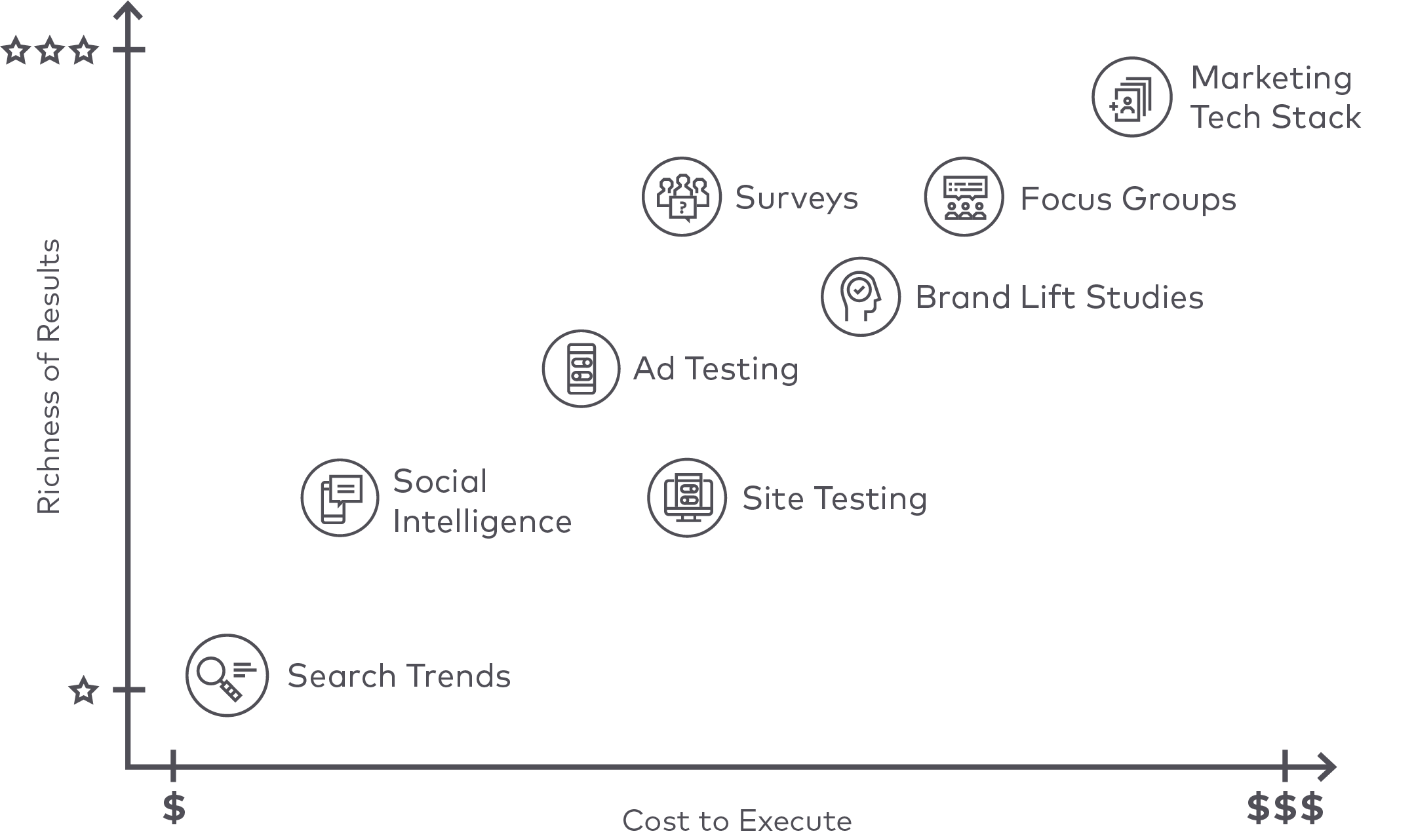A Research Approach for Communicators
Understanding the available tools at every step of a campaign.
Executive Summary
For too long, communicators have thought of public opinion research narrowly. We often default to primary research tactics like surveys and focus groups. But if the recent election cycle has taught us anything, relying on just one approach to research can lead to skewed data and inaccurate conclusions.
There’s no doubt that primary research is valuable, but smart communications professionals should consider deploying additional, emerging research tactics. These newer research methods can provide a deeper understanding into the audiences we need to reach and how to move them to action.
Imagine how much stronger a campaign strategy will be at its onset if you combine the richness of primary research as well as direct feedback from ad testing or social conversation analysis. An integrated research approach that combines the best of both sources – what people say and what people actually do – allows us to deliver measurable results and craft a sound content, channel and audience strategy rooted in insights.
In a digital world with no shortage of data, we must evolve our research strategies to marry traditional research with digital data at all points in the communications planning process.
Key Objectives
This report will accomplish the following:
- Understand the research tactics available to communicators and learn how they compare in cost and richness of results
- Identify different communications planning scenarios throughout the lifetime of a campaign and illustrate how new research tactics work together to inform key decisions
- Apply research tactics to communications scenarios based on varying budget levels
Communications Campaign Phases

Research Tactics: Richness vs. Cost

For more information on each research tactic, download the full report below.

